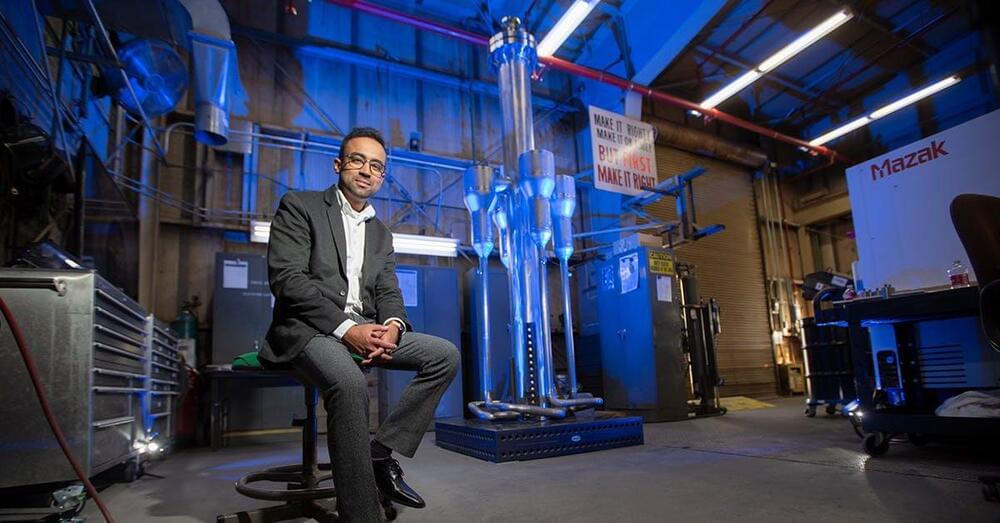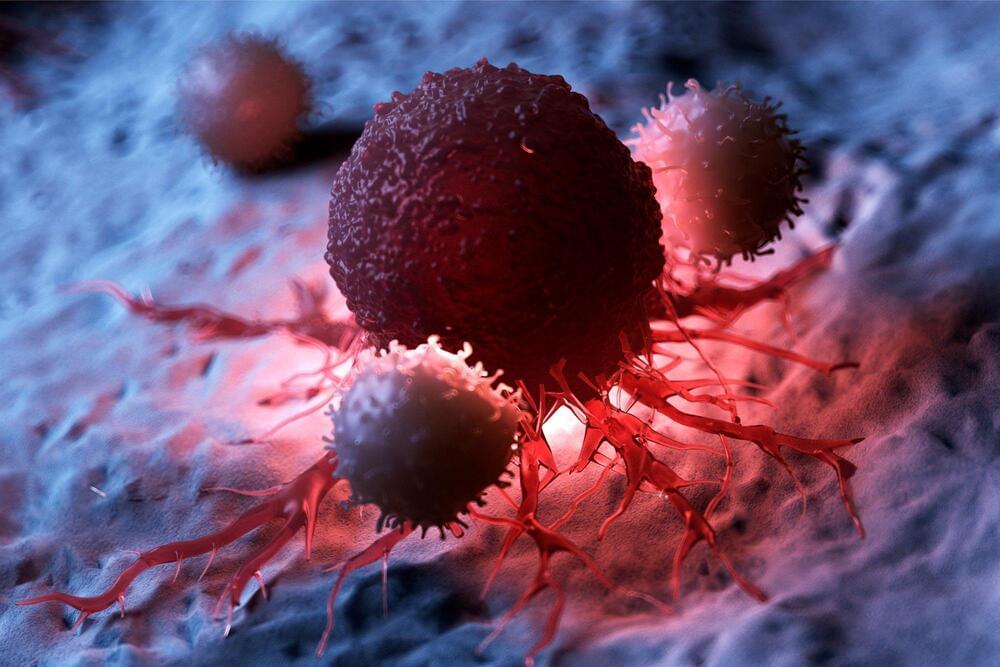Researchers from the University of Copenhagen found an alternative route that certain cells take to make organs and used that knowledge to exploit a new type of stem cells as a potential source of organs in a dish.


Eric Topol speaks with DeepMind CEO Demis Hassabis about harnessing the potential of AI in health and medicine.

Yasir Arafat is a MARVEL superhero. No, he’s not a Marvel Comics superhero. Rather, he’s a nuclear engineer leading development of the U.S. Department of Energy’s Microreactor Applications Research Validation and Evaluation (MARVEL) project at Idaho National Laboratory.
And from concept to construction, MARVEL is coming together at lightning speed.
By donna kemp spangler, INL communications & outreach.
No, he’s not a Marvel Comics superhero. Rather, he’s a nuclear engineer leading development of the U.S. Department of Energy’s Microreactor Applications Research Validation and Evaluation (MARVEL) project at Idaho National Laboratory.

All monkeys appeared clinically normal on Day 0 of the study. Monkeys began to show evidence of exanthema, enanthema, mild anorexia, fever, cough, and nasal discharge on Days 6 and 7 postexposure. Dyspnea, noted as early as Day 8 postexposure, was evident in all animals by Day 10. By Days 9 and 10, all animals had exanthema and enanthema, were depressed and severely anorectic, and showed signs of weakness. Clinical signs progressed until the animals died naturally or were killed 9 to 17 days postexposure (mean 11.7 days). There was no correlation of inhaled dose to survival time. Leukocytosis (absolute and relative monocytosis) developed with the onset of clinical signs on Day 6. There were no trends detected in clinical chemistry data. Virus was first isolated from buffy coat cells of one of eight animals tested on Day 6. Nine of 11 animals were positive on Day 9, and 2 of 7 remained positive on Days 12 or 13. There was no cell-free viremia detected at any time.
Principal gross necropsy findings are presented in Table 1. All deaths were attributed to bronchopneumonia, although secondary bacterial septicemia was considered to be a contributing factor in one animal. Lungs were heavy and congested and failed to collapse. A dark red, lobular, mottled pattern of edema, atelectasis, and necrosis was distributed throughout all lung lobes (Fig. 1A). Occasionally, there was fibrinous pleuritis with pleural adhesions and multifocal, white, plaque-like thickenings of the visceral pleura. We observed a clear pericardial effusion in two monkeys.
Dermatitis, present in all monkeys, varied from barely detectable, single, small papules to extensive involvement primarily affecting the inguinal, ventral abdominal, ventral thoracic, perineal, and facial regions (Fig. 1, B and C). Palmar surfaces of the hands and plantar surfaces of the feet were only occasionally involved. The extent of involvement and the stage of skin lesion development noted at necropsy exhibited a positive correlation with the number of days elapsed since initial onset of the lesions was noted clinically. In animals necropsied 1 to 2 days after onset of exanthema, lesions were generally minimal in extent and were in the papular stage, appearing as pale tan to white, slightly raised foci, 2 to 4 mm in diameter. At 3 to 5 days post onset, lesion distribution was characterized as mild. Papules were accompanied by 1 to 2 mm vesicles. Vesicle formation, however, was not prominent grossly.

Until now, the ability to travel faster than the speed of light has only been seen in Sci-Fi movies. What if we can actually make that a reality!
If we ever hope to visit other parts of our galaxy, we’ll have to travel at speeds we’ve never imagined.
A possible solution to the problem of traveling at the speed of light or even faster is the “warp drive” popularized by Star Trek, the sci-fi franchise still ongoing.
Therefore, if we could find a way to bend or warp spacetime, we would be able to move around the cosmos in the blink of an eye. Although, warp drives have mostly remained the preserve of science fiction.
However, a number of new discoveries by a German physicist about the nature of space and time imply that Einstein’s purportedly unbreakable speed limit may not be so unbreakable after all.
Does that mean it is possible to travel faster than the speed of light by warping spacetime? And in doing so, have we also discovered the key to exploring the universe?



A research team from the Korea Institute of Science and Technology has developed ‘nanomachines,’ which use mechanical molecular movements to penetrate and destroy cells. Selective cancer cell penetration is also possible by using a latch molecule released near cancer cells. Cancer is a condition where some of the body’s cells grow out of control and spread to other bodily regions. Cancer cells divide continually, leading them to invade surrounding tissue and form solid tumors. The majority of cancer treatments involve killing the cancer cells.
According to 2020 estimates, 1.8 million new instances of cancer were diagnosed in the US, and 600,000 people passed away from the condition. Breast cancer, lung cancer, prostate cancer, and colon cancer are the most common cancers. The average age of a cancer patient upon diagnosis is 66, and individuals between the ages of 65 and 74 account for 25% of all new cancer diagnoses.
Proteins are involved in every biological process and use the energy in the body to change their structure via mechanical movements. They are referred to as biological ‘nanomachines’ since even minor structural changes in proteins have a substantial impact on biological processes. To implement movement in the cellular environment, researchers have focused on the development of nanomachines that imitate proteins. However, cells use a variety of mechanisms to defend themselves against the effect of these nanomachines. This restricts any relevant mechanical movement of nanomachines that could be used for medical purposes.
